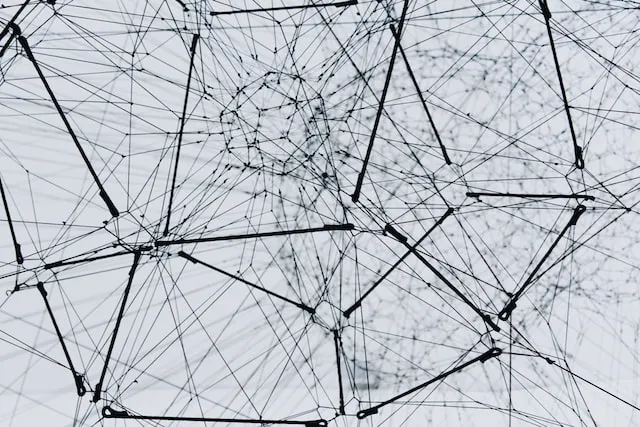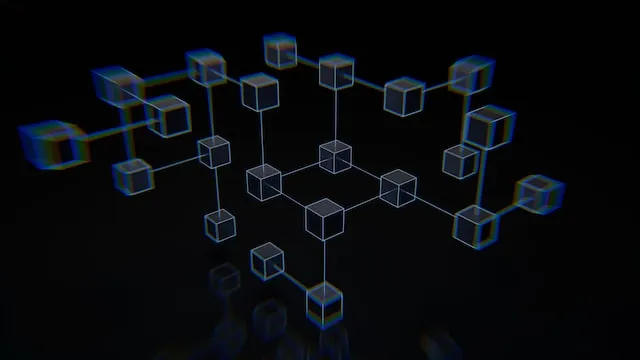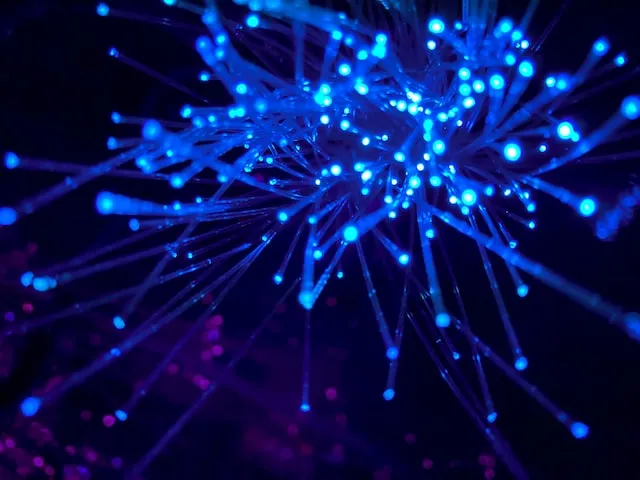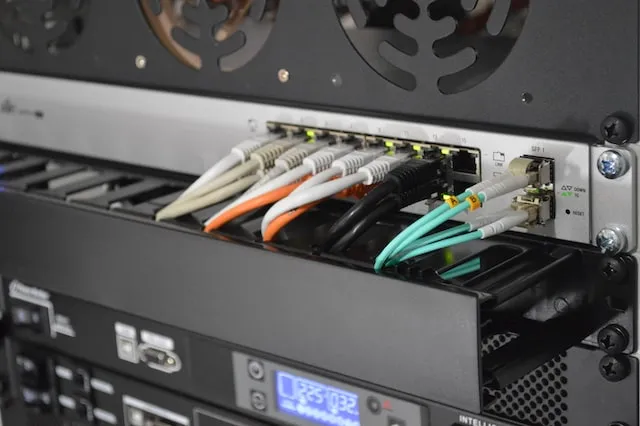What is a Node in Computer Network – A Complete Guide
In computer networks there are quite a lot of terms and components used. One of them is nodes. So what is a node on a computer network? Maybe there are still many readers who feel unfamiliar with these network components.
Nodes can be understood as connecting points between one device and another on the network. This allows the transfer of data from one device to another in the network topology.
Actually, the definition of the node itself can vary, depending on the network and protocol layer. But in general it can be understood in the same sense and outline. Neither in the definition nor in the function that the node has.
Table of Contents
- What is a Node on a Computer Network?
- General Types of Nodes
- Examples of Nodes on a Computer Network
- Node Functions on a Computer Network
- Conclusion
What is a Node on a Computer Network?

Node is taken from Latin, namely nodus. In general, a node is part of a physical network in a computer system that functions as a communication channel because it connects one device to another in the distribution of data or information.
If you are still confused about what is meant by a node, the simple picture is that nodes are points that are spread out in a room. Then the dots are connected to each other using lines and finally form a certain pattern.
Of course, making these imaginary lines will not be possible if there are no scattered dots in the room. So it is not surprising that nodes have an important role in the performance of a technology.
Without nodes, the foundation of a computer network will not be able to work optimally in sending data and information digitally. Nodes can also be interpreted as active electronic devices that are able to create, receive, and transmit data on a network.
Each device in a computer network can be categorized as a node. However, some of the devices that most often act as nodes are:
- Computer
- Servers
- Smartphones
- Routers
Each of these devices certainly has different functions and roles in the computer network topology.
For example, in a home internet network, a router or modem will act as a liaison between the device you are using (such as a cellphone or laptop) to the internet service provider’s (ISP) server. So that the device can be connected to the internet network.
General Types of Nodes

After knowing about what is a node, you also need to know the types of nodes in general. Node is a very common term in the world of technology, and is not only used in the context of computer networks.
For your information, here are some common types of nodes that can be found today:
1. Computer Network Nodes
One of the most commonly used types of nodes is a node on a computer network. In a computer network, a node can be either a Data Communication Equipment (DCE) or a Data Terminating Equipment (DTE).
Read: What is a Gateway and its Function on a Computer Network
DCE’s role is to receive and forward data from the server side to the client side. While the DTE can only receive data and deliver output according to client requests. The following are examples of devices that act as DCE and DTE:
DCE
- Bridge
- Hub
- Modems
DTE
- Computer (example: server, router, or workstation)
- Telephone digital headset
- Printers
Each component of the network device is mostly familiar to you. If you use a computer network such as a LAN or WAN, then each node in it must have a MAC address that is used to name each device on the network.
2. Communication Network Nodes
Apart from being found on networked computers, nodes can also be found in other technology sectors. One of them is in the field of communication. The next type of node is a communication network node on a cellular phone. The communication network node can be a SGSN (Serving GPRS Support Node) or a Gateway GPRS Support Node.
In addition, network nodes can also be found in cable television (CATV) systems. CATV itself often involves various devices that can work with fiber optic cables. The existence of these nodes will make the process of communication and data transfer easier and more effective.
3. Nodes in a Distributed Network
The next type of node is a node in a distributed network. In a distributed network, clients, servers, and peers act as nodes. Distributed networks also often use virtual nodes to build a standard system and avoid too high heterogeneity between nodes.
Examples of Nodes on a Computer Network

Although it looks simple, nodes have a very important role in computer networks. Because nodes participate in running a connection between computer networks. Without nodes, it seems impossible for the transmission of various kinds of digital data to be distributed smoothly.
So that you can understand in more detail about nodes, here are some examples of nodes on a computer network:
1. Local Nodes
When using a local node, not all devices (which are considered as a point or node) are connected to the internet. For example, in your house there are several devices such as speakers to produce sound and a printer as a medium for printing data from soft-copy.
Read: What is a Switch: Definition, Type, and How it Works
Both the printer and the speakers are actually connected to the computer you are using. However, both of them are not always connected to the internet and can still operate properly as long as the range between them is still close to the computer.
2. Personal Nodes
The next example of a node on a computer network is a personal node. Just as the name suggests, personal nodes are nodes that prioritize private nodes. It can be illustrated when you use Bluetooth to transfer data to other devices, for example transferring a list of favorite songs from a smartphone to a personal computer (from one node to another).
Of course, when using a Bluetooth network, you have limitations in terms of range and data access, so only nearby and personally verified devices can continue the process of sending the song.
3. Servers

The next example of a node on a computer network is Servers. In this system, the server functions as a provider of web servers and sites that require data storage media, such as images, audio, and other documents.
Read: What is a Server: Definition, Functions and Types
Of course, the server can connect to various sites or be used privately (private), and this is where the process of working nodes (from server to site) works. Thus, the data on the server will be accessible by certain parties as needed.
4. Virtual Hosts
The next example of a node is a Virtual Host. Maybe you think that node only applies to computer hardware. But in fact this is not the case because nodes can also be virtual and their functions are not much different from nodes in general.
As a simple illustration, on a system on the internet there is one core machine (physical machine) that has a row of virtual hosts and acts as a server.
Later, the server can be used as a network address or as a cloud object storage for storing large amounts of data. Of course, a server like this is very much needed because in terms of cost efficiency and security it is also better.
Node Functions on a Computer Network

After knowing what is a node, you also need to know the function of nodes on a computer network. As supplementary information, here are some node functions that you need to know:
1. As a Peer-to-Peer (P2P) Network
Peer-to-peer network is a model where each computer can use resources on other computers or provide resources for use on that computer. The resource in question can consist of files, printers, hard disks, CD-ROMs, and so on.
So, you can retrieve files from your friends’ computers without using a flash drive or downloading them to retrieve data sent by your friends via WhatsApp or email. This can be done, if the computer network in your workspace is not active or dead.
Read: What is Network Topology?
However, if the computer network is active, to retrieve data from one computer to another, you only need to access it through your own computer.
The trick is that you can provide an IP Address from the same IP class so that you can share to other computers to exchange data or resources owned by each computer.
2. Client-Server Network
The next function of using the node is as a client-server network. In short, a client-server network is a network model that uses several computers as server computers that provide resource access to other computers (clients) on a network.
The server will manage all the mechanisms to access the resources that are allowed to be used. Then, there is also a communication mechanism between nodes in the network. Not only on the local network, this client-server system can also be used on internet technology.
Read: 13 Examples of Computer Hardware and Their Functions
If you want to try it, you can give a computer unit that is in charge of being a server computer to provide services for client computers. Also, on the client computer side, they can also request services provided by the server computer to access the desired data resources.
Conclusion
The term node is often found in computer networks. Each type of network has nodes with different roles. So the understanding and definition of nodes on each network can be different.
But basically, a node is an active component whose role is to receive, spread, or provide data in a network — regardless of the type of network. Nodes are points that connect several devices on a computer network.
Thus, a complete discussion of what is a node on a computer network in full. Hopefully this article can help readers in understanding the meaning, function, and also the types of nodes that are commonly used in computer networks.
